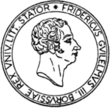Arthur Burkhardt’s Arithmometer – the start of calculating machine production in Germany at the end of the 19th century
The Burkhardt Arithmometer is the first German calculating machine using a stepped drum principle that was mass-produced. From 1878 onwards, it was manufactured by Arthur Burkhardt in Glashütte, Saxony. Designing his machine, Burkhardt simply thought up a copy of the Arithmomètre by Thomas (cf. inventory number FDM 9140) with some minor changes. Compared to the original, the biggest advantage of Burkhardt’s machine – from a German point of view – was the fact that it did not have to be sent to Paris for repair and maintenance work, but only to Saxony. Burkhardt managed to establish the glory of calculating machine production in Saxony with his stepped drum machine. In 1892, three models were obtainable: one with 6 digits (in the input mechanism) for 375 marks, one with 8 digits for 475 marks and one with 10 digits for 675 marks. This 6-digit specimen with the low machine number 324 must have been an early model (around 1890). The revolution counter and the result mechanism can be cleared via two control knobs that bear the inscription of the utility model number “D.R.G.M. N° 78251”. Two more later specimens of model A are also part of the Arithmeum collection.
Claas Dabrock, student of Computer Science, made a 3D animation of Burkhardt’s Arithmometer model 324 as part of his bachelor thesis for Professor Dr. Ina Prinz which provides a thorough insight into the basic functions of this calculating machine while at the same time showing the stunning similarities to Thomas’ Arithmometer.
(Representing the dark surface of the brass that was originally treated with shellac and darkened profoundly over time, proved difficult. It is not, however, as might be suspected from certain camera shots, made from wood. We apologize for this slight deviation from the visual appearance.)






